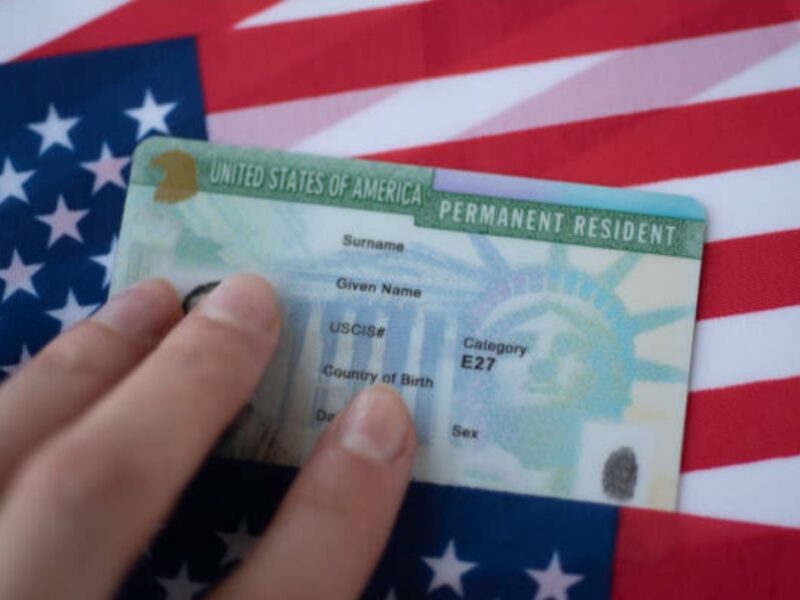Canada is one of the most popular destinations for immigrants from Nigeria who want to pursue a better life and career opportunities. Canada offers a fast and flexible immigration system through the Express Entry program, which allows skilled workers to apply for permanent residence based on their human capital factors, such as education, work experience, language ability, and age.
If you are interested in applying for Canadian Express Entry from Nigeria, here are the steps you need to follow:
Step 1: Test your eligibility for Express Entry
The first step is to check if you are eligible for one of the three immigration programs under Express Entry: the Federal Skilled Worker Program (FSWP), the Federal Skilled Trades Program (FSTP), or the Canadian Experience Class (CEC). Each program has its own eligibility criteria, such as minimum work experience, education level, language proficiency, and occupation type. You can use the online tool Come to Canada to find out which program you qualify for.
Step 2: Get your documents ready
The next step is to prepare the documents you will need to submit your Express Entry profile and your permanent residence application. The main documents you will need are:
- A valid passport
- A language test result (IELTS or CELPIP for English, TEF or TCF for French)
- An Educational Credential Assessment (ECA) report if you have a foreign education
- A job offer letter from a Canadian employer (optional)
- A provincial nomination certificate (optional)
- Police certificates from all the countries where you have lived for more than six months
- Medical examination reports from a designated panel physician
You should also gather documents that prove your work experience, such as reference letters, pay slips, tax returns, and contracts. You may also need to provide proof of funds to show that you have enough money to support yourself and your family in Canada.
Step 3: Submit your Express Entry profile
Once you have your documents ready, you can create an online account and submit your Express Entry profile. This is a form where you provide information about your personal details, education, work experience, language ability, and other factors. You will also need to indicate which immigration program you are applying for and whether you have a job offer or a provincial nomination.
Your Express Entry profile will be scored based on the Comprehensive Ranking System (CRS), which assigns points for each factor. The maximum CRS score is 1,200 points. The higher your CRS score, the more likely you are to receive an invitation to apply (ITA) for permanent residence.
Step 4: Receive an invitation to apply
Every two weeks, the Canadian government conducts a draw from the pool of Express Entry candidates and invites the highest-ranking ones to apply for permanent residence. The minimum CRS score required to receive an ITA varies depending on the number of candidates and invitations in each draw. You can check the latest draw results and CRS cut-off scores on the Express Entry page.
If you receive an ITA, you will have 60 days to submit your online application for permanent residence. You will need to upload the documents you prepared in step 2 and pay the application fees. The fees are $825 CAD for the processing fee, $500 CAD for the right of permanent residence fee, and $85 CAD for the biometrics fee. You may also need to pay for the translation of your documents if they are not in English or French.
Step 5: Wait for the decision
After you submit your application, you will have to wait for the Canadian immigration authorities to process it and make a decision. The processing time depends on the complexity of your case, the completeness of your application, and the verification of your documents. The average processing time for Express Entry applications is six months or less.
You can check the status of your application online through your account. You may also receive requests for additional information or documents, such as updated police certificates, medical reports, or biometrics. You should respond to these requests as soon as possible to avoid delays in your application.
Step 6: Confirm your permanent residence
If your application is approved, you will receive a confirmation of permanent residence (COPR) and a permanent resident visa (if you need one) by mail or email. You will have to present these documents when you arrive in Canada to become a permanent resident. You will also have to confirm your address in Canada so that you can receive your permanent resident card by mail.
You must travel to Canada before the expiry date of your COPR and visa, which is usually one year from the date of your medical examination. You can choose to land at any port of entry in Canada, such as an airport, a border crossing, or a seaport. You will have to answer some questions from the immigration officer and show your documents. If everything is in order, you will be granted permanent residence and welcomed to Canada.
Step 7: Settle in Canada
The final step is to settle in Canada and start your new life. You will have to find a place to live, a job, a school for your children, and other essential services. You will also have to learn about the Canadian culture, laws, rights, and responsibilities. You can access various settlement services and programs to help you with your integration, such as language classes, employment counseling, community orientation, and social support.
As a permanent resident, you will enjoy many benefits, such as access to health care, education, social security, and protection under the law. You will also be able to travel to and from Canada without restrictions, as long as you meet the residency obligation of living in Canada for at least two years in every five-year period. You will also be eligible to apply for Canadian citizenship after living in Canada for three years in the last five years.
Congratulations, you have successfully completed the process of applying for Canadian Express Entry from Nigeria. We hope this article was helpful and informative. If you have any questions or comments, please feel free to contact us. We wish you all the best in your journey to Canada..


